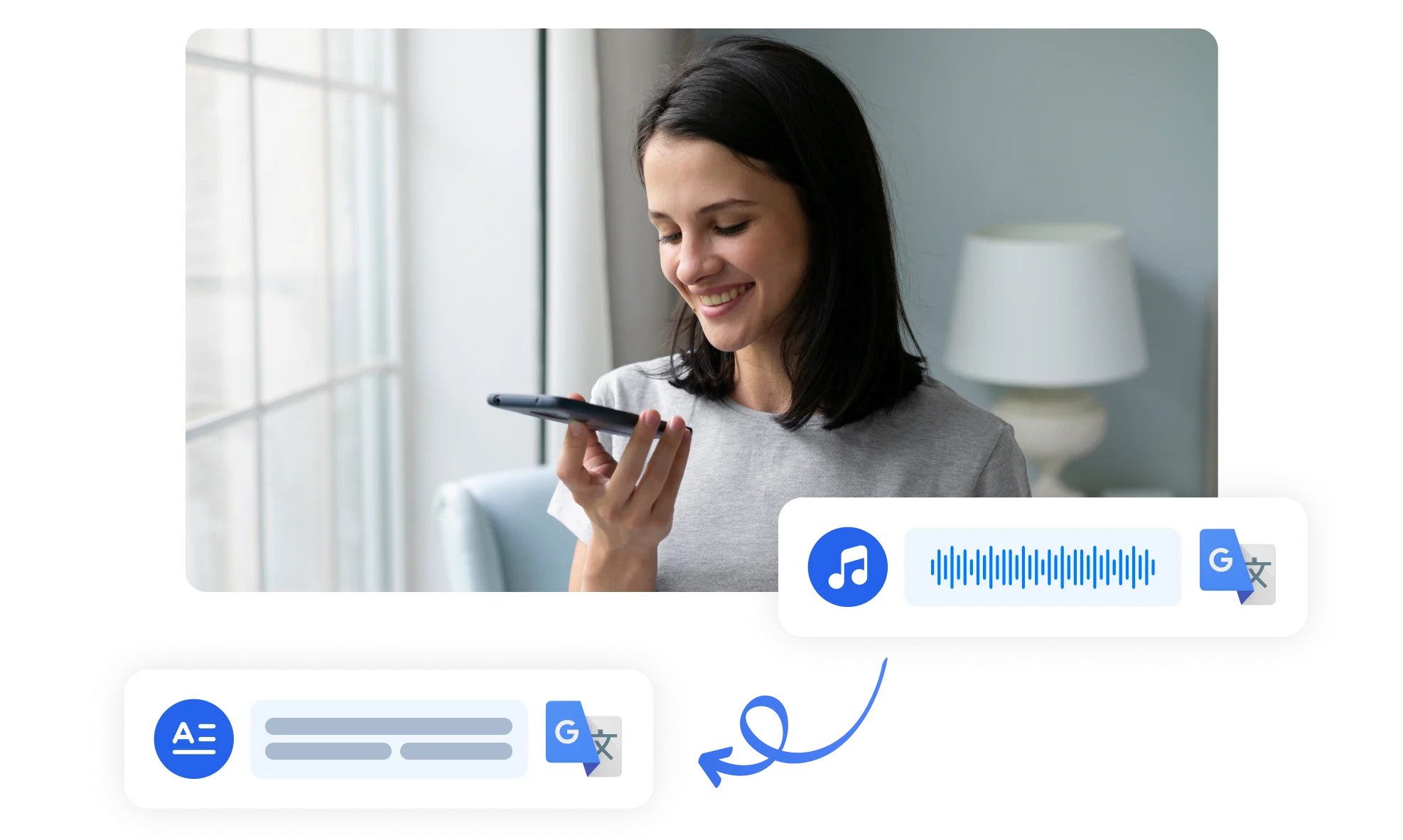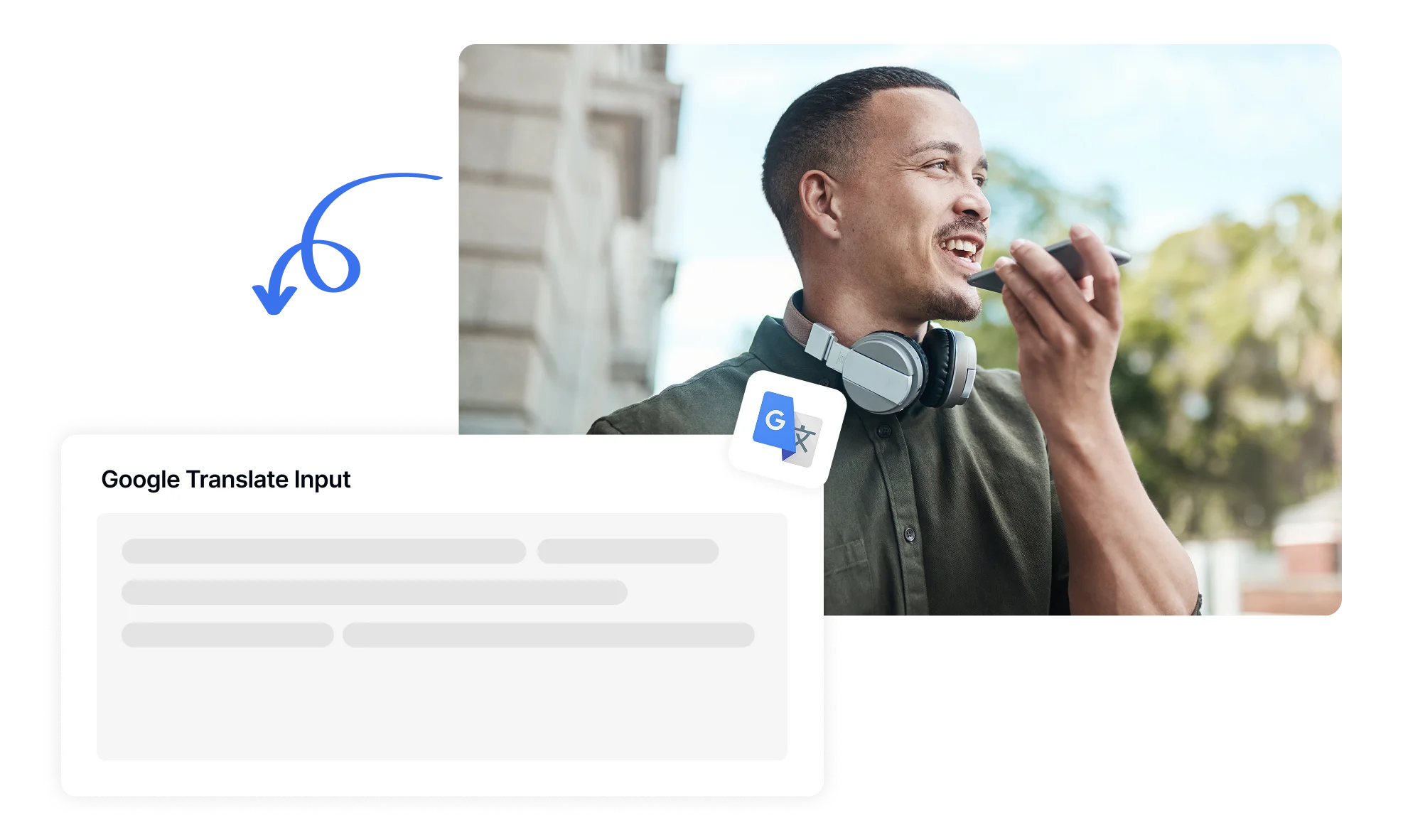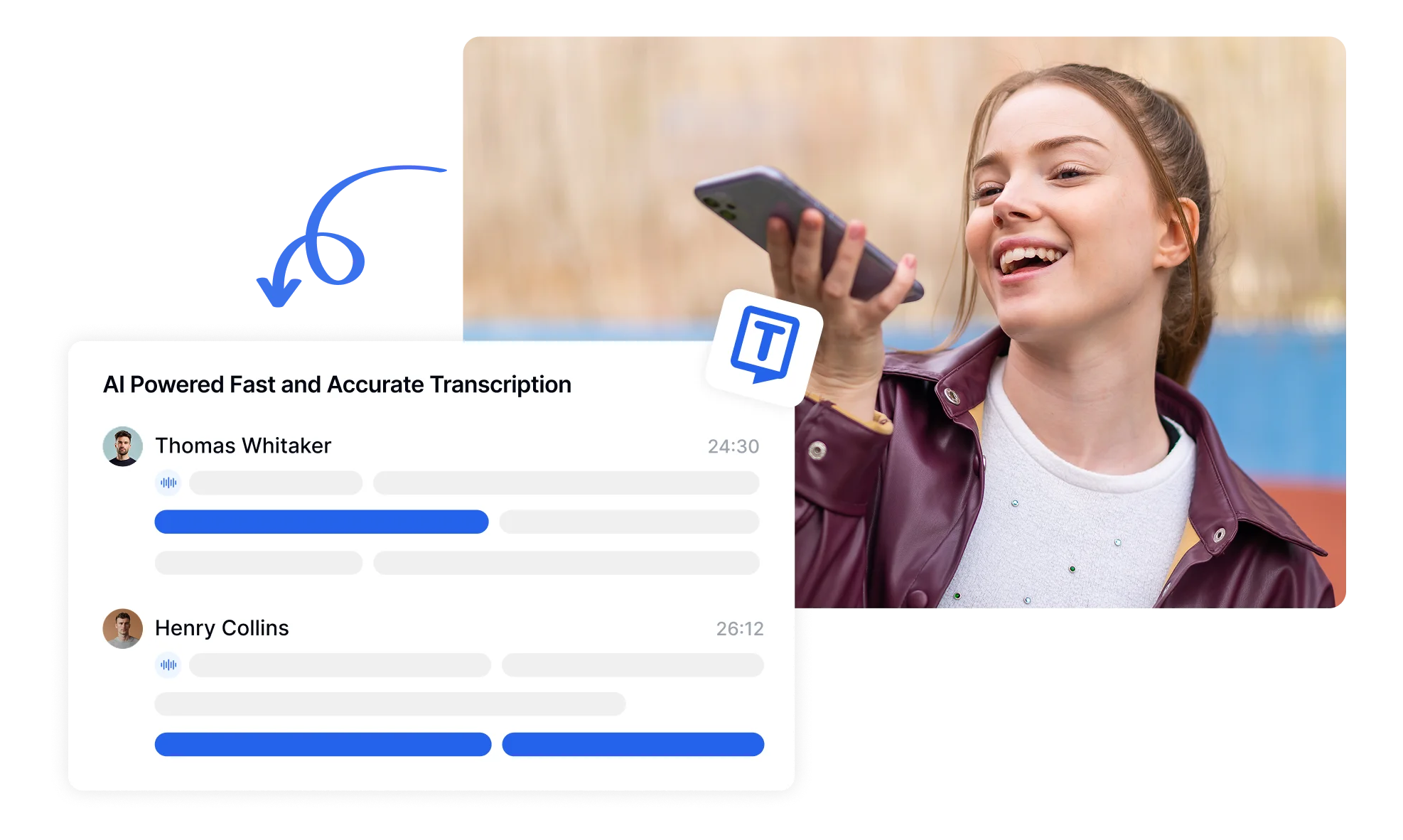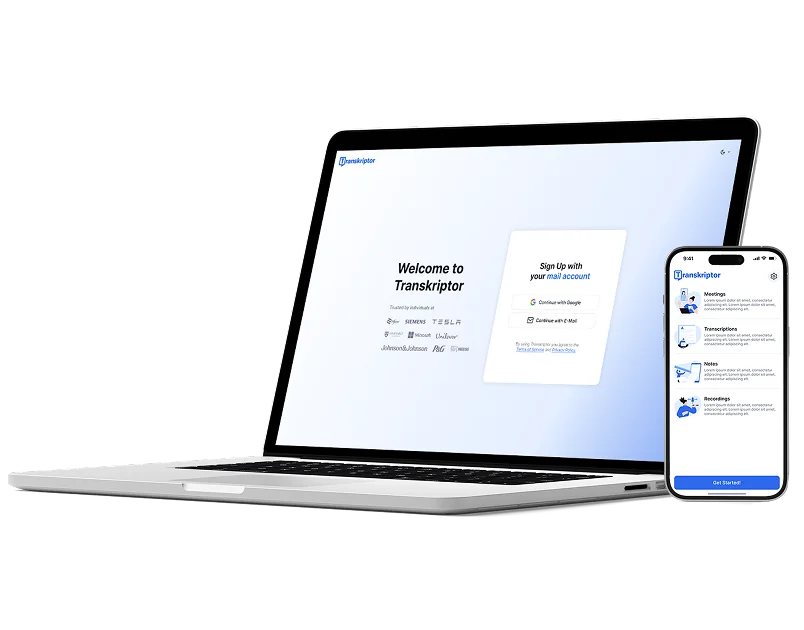Table of Contents
- Step 1: Open Google Translate
- Step 2: Select Languages
- Step 3: Click on the Microphone Icon
- Step 4: Start Speaking
- Step 5: Stop the Recording
- Step 6: Edit and Copy the Text
- What are the Best Practices for Using Google Translate?
- How to Optimize Audio Quality for Better Text Conversion?
- Why Use Transkriptor for Audio-to-Text Conversion over Google Translate?
- How to Use Google Translate with Transkriptor?
Transcribe, Translate & Summarize in Seconds
Table of Contents
- Step 1: Open Google Translate
- Step 2: Select Languages
- Step 3: Click on the Microphone Icon
- Step 4: Start Speaking
- Step 5: Stop the Recording
- Step 6: Edit and Copy the Text
- What are the Best Practices for Using Google Translate?
- How to Optimize Audio Quality for Better Text Conversion?
- Why Use Transkriptor for Audio-to-Text Conversion over Google Translate?
- How to Use Google Translate with Transkriptor?
Transcribe, Translate & Summarize in Seconds
How to Convert Audio to Text with Google Translate?
Google Translate is a free platform for automatic language translation and a basic voice-to-text transcription. Google Translate allows users to speak directly into the program, for real-time audio-to-text conversion , or play a pre-recorded audio file. Google Translate is praised for its phenomenal language coverage and easy-to-use interfaces for desktop and mobile users.
However, Google Translate’s voice-to-text features are only suitable for short phrases and lack advanced transcription tools. Transkriptor , in contrast, offers a robust AI-powered transcription platform that provides fast, accurate transcripts for long audio and video content. Google Translate does not come with audio translator capabilities. With Transkriptor, users are able to easily transcribe large audio/video files and translate them on the platform.
The 6 steps to convert audio to text with Google Translate are listed below.
- Open Google Translate: Download the Google Translate app or open the website.
- Select Languages: Select the source and target languages by using the drop-down menu.
- Click on the Microphone Icon: Press the microphone icon to transcribe the text to be translated.
- Start Speaking: Start speaking slowly and clearly to Google Translate to detect the words accurately.
- Stop the Recording: Press the square 'stop' icon once the whole text is spoken.
- Edit and Copy the Text: Review and edit the transcribed text to ensure that it is error-free. Copy and paste the text to export it.
Start converting audio to text with Google Translate; follow this simple guide to begin translating instantly.
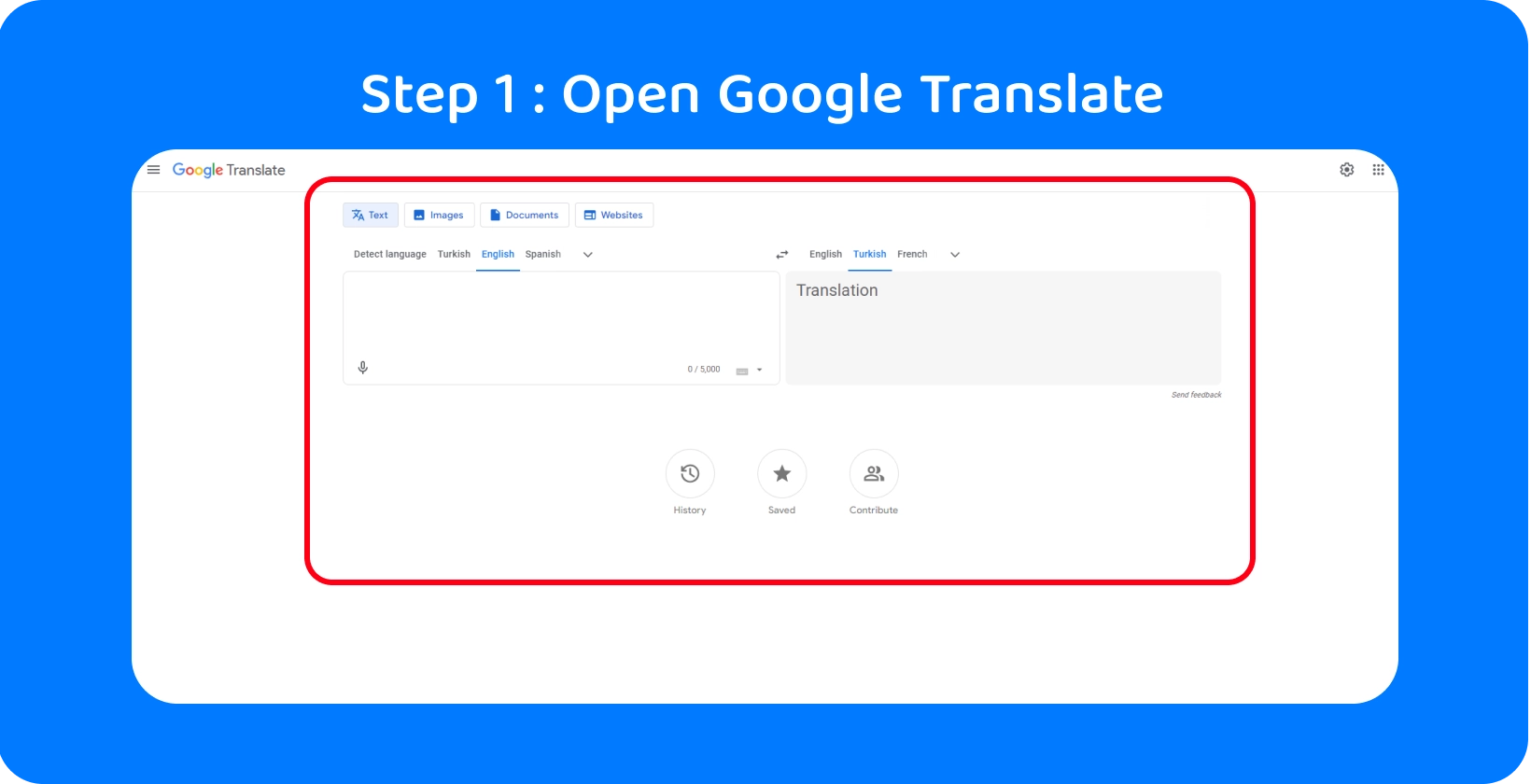
Step 1: Open Google Translate
Start by going to the Google Translate website, downloading the Google Translate app from the App Store (Apple devices), or downloading it from the Google Play store (Android devices). The Google Translate website and app offer the same features, but with different layouts to suit desktop and mobile devices.
Continue to Step 2 in Google Translate for audio-to-text: a seamless transition from speech to script awaits.
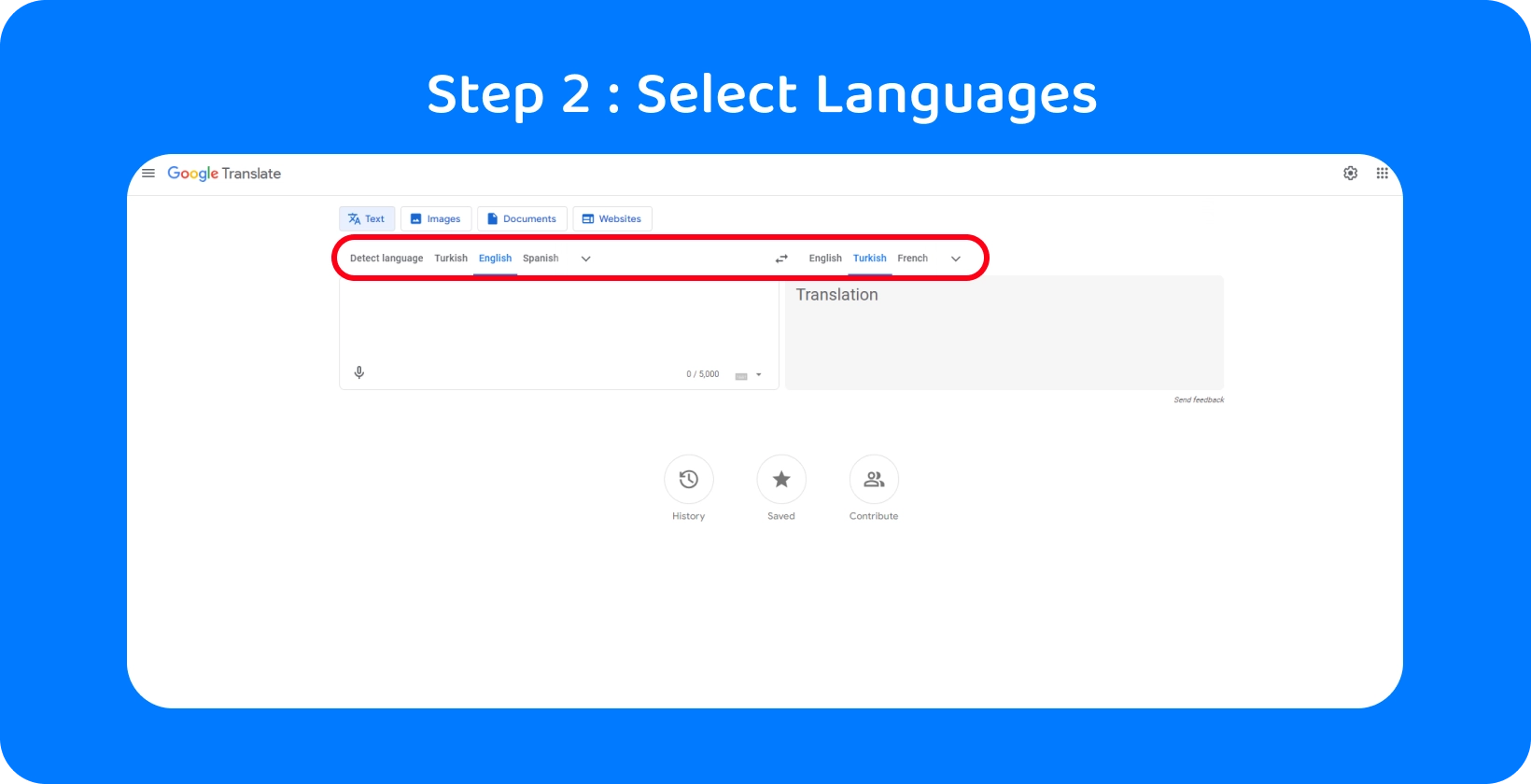
Step 2: Select Languages
Google Translate prompts users to select two languages: the source language that they will be speaking in, and the target language that they want the text to appear in. Use the drop-down menu to select the target language and source language, scrolling to the desired language in the list, or typing its name into the search bar at the top of the screen.
Google Translate also offers users a 'Detect language' option when they are choosing the source language. The 'Detect language' function automatically identifies the language being spoken in the audio, based on an analysis of which characters are used. Use this option sparingly, as Google’s automatic language detection is a work in progress, and sometimes incorrectly identifies the source language.
Activate Google Translate's microphone in Step 4 to convert the speech to text effortlessly. Try it now!
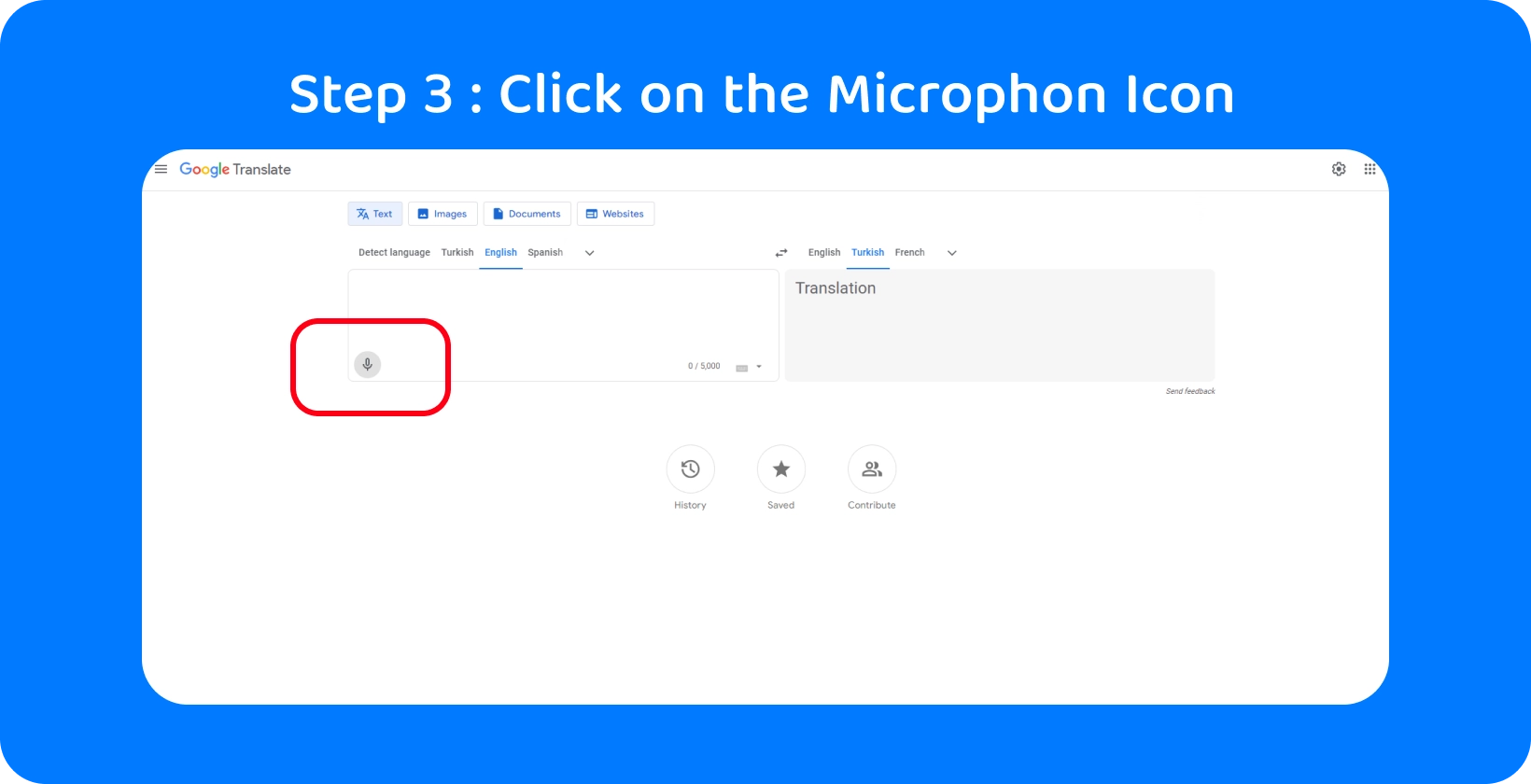
Step 3: Click on the Microphone Icon
Hovering over the microphone icon in Google Translate causes a line of text to appear describing the function of the button: 'translate from voice'. Press the microphone icon, click ‘OK’ on the request from Google to send the transcription data to its servers, and prepare to start speaking to transcribe the text to be translated.
Step 4: Start Speaking
The first step to recording audio is giving Google Translate permission to access the device’s microphone, if it has not already been granted. It is time to start speaking Once the source language and target language have been selected, and Google Translate has been given access to the device’s microphone.
Open the Google Translate application and press the microphone icon to record the audio. Speak slowly and clearly, enunciating each word while keeping a natural speaking rhythm. Some tips for successful audio recording are to find a quiet place to record, with minimal disruptions and background noise, as well as to use a headset with a microphone whose quality exceeds the built-in microphone on the device.
Translation completed on Google Translate, showcasing successful audio to text conversion in Step 5.
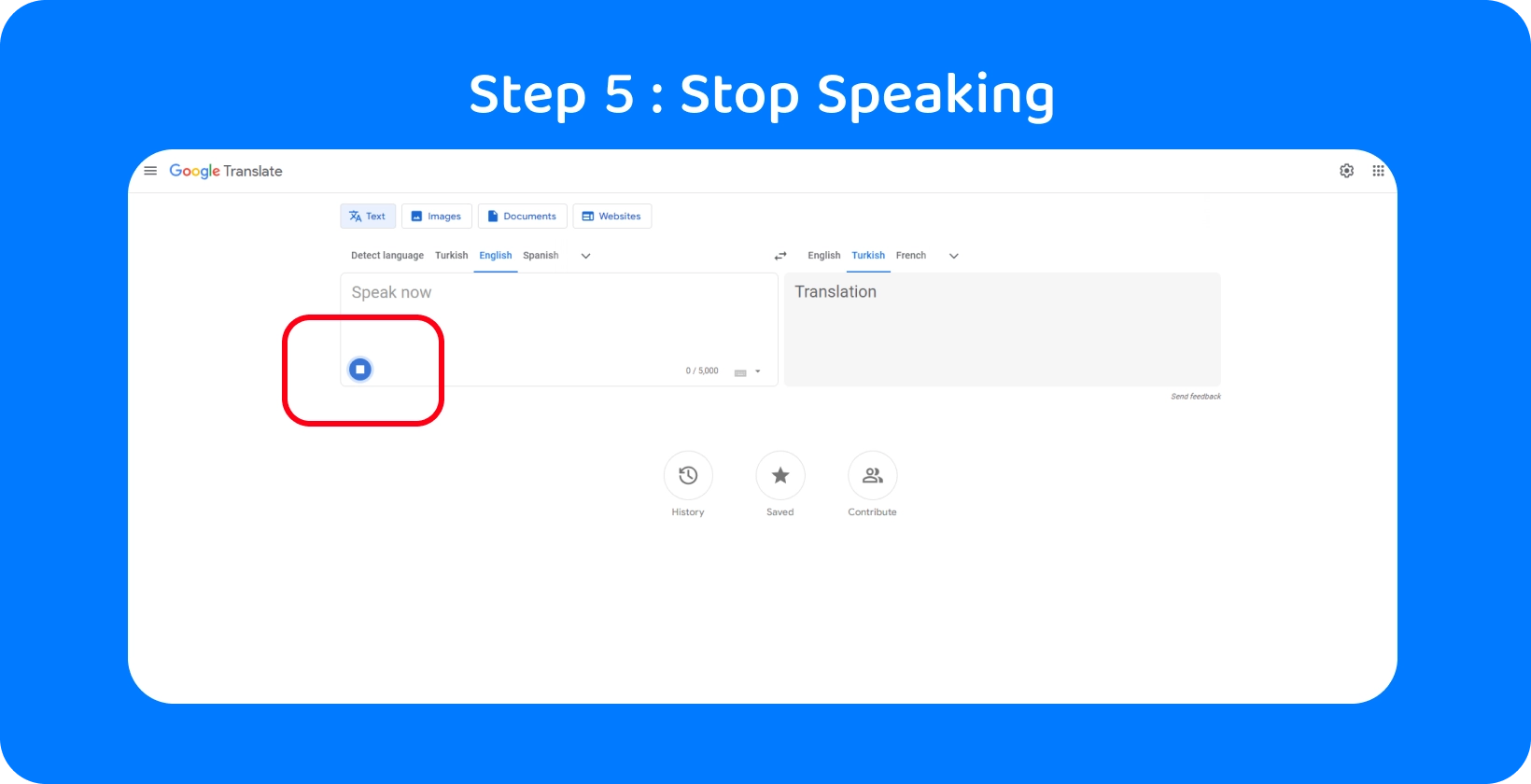
Step 5: Stop the Recording
Stop the recording by pressing on the square 'end' icon once the recording is complete, indicated by the translated text appearing on the screen. Note that Google Translate only allows users to transcribe 5,000 characters at a time, which is roughly 982 words at just under 8 minutes of talking, so it is for shorter audio recordings. However, Transkriptor does not have such limitations and offers more accurate transcription, allowing for the transcription of longer files without interruption.
Two versions of the text are shown on screen when the recording is stopped: the transcription of the recording in the source language, and the translated text in the target language. The transcription is shown in a text box on the left side of the screen, and the translation is shown on the right on the Google Translate website. The transcription is in a text box at the top of the screen, and the translation in one underneath in the Google Translate app.
See the spoken words turned into text with Google Translate in Step 5 - accurate and quick translation.
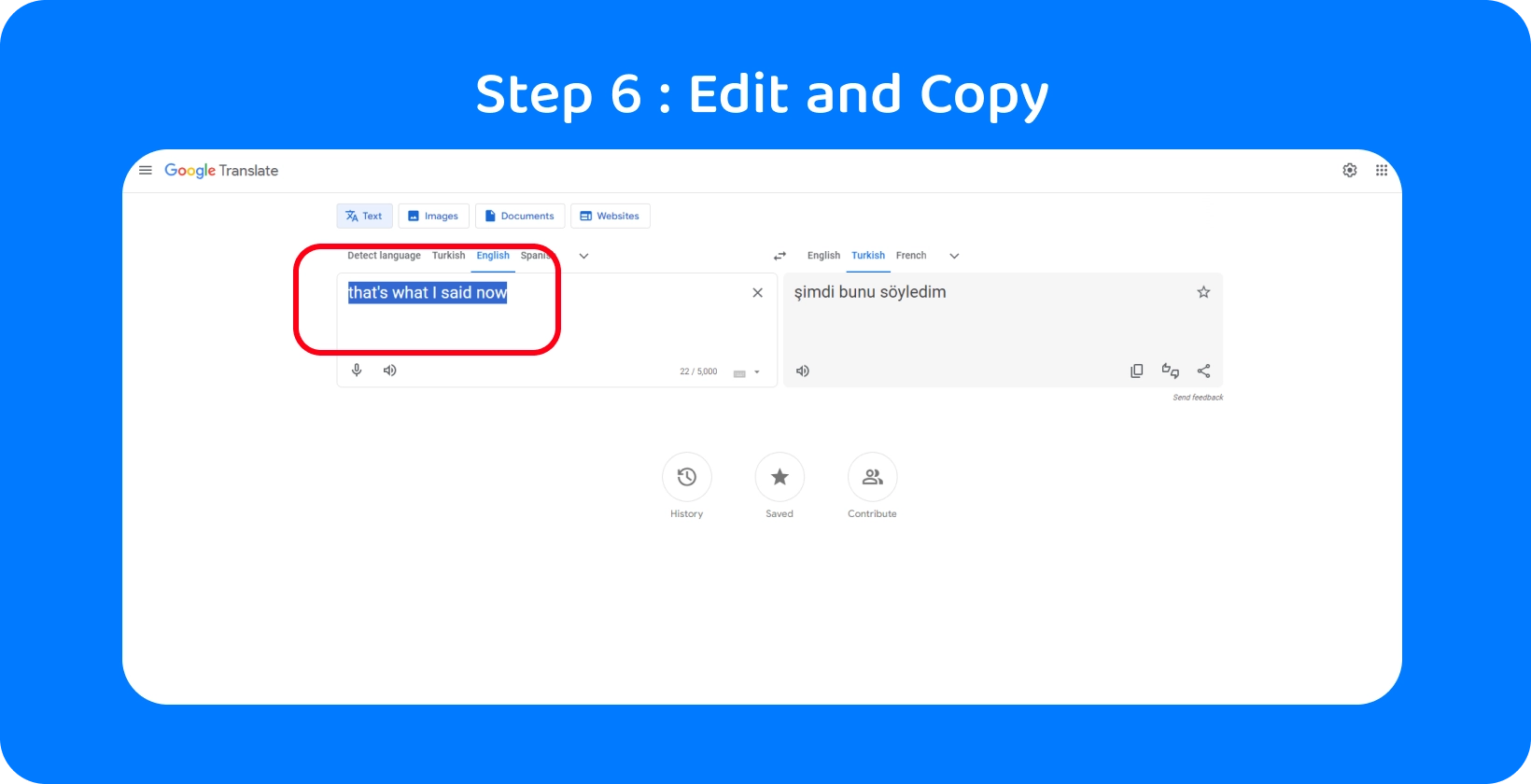
Step 6: Edit and Copy the Text
While Google Translate provides a basic transcription service, it may not always accurately capture audio, necessitating manual corrections to align the transcript with the recorded speech. Although Google Translate updates the translation automatically with each edit to the transcript, direct editing of the translation is not possible. Users can copy the translated text for use elsewhere by clicking the icon resembling two overlapping rectangles.
Transkriptor, on the other hand, offers more accurate transcription services, reducing the need for extensive edits. Additionally, editing within Transkriptor is more straightforward, enhancing the efficiency of the transcription process. This ease of editing, combined with higher transcription accuracy, makes Transkriptor a superior choice for users requiring reliable and user-friendly transcription solutions, such as when using audio to text on evernote .
What are the Best Practices for Using Google Translate?
The 4 best practices for using Google Translate to get accurate results are listed below.
- Ensure Clear and Slow Speech: Speak clearly, loudly, and slowly to get more accurate transcriptions.
- Use High-Quality Audio Equipment: Get an external microphone if the quality of the built-in microphone is not enough.
- Regularly Test for Accuracy: Stop and check the accuracy of the transcription to be sure it corresponds with the audio.
- Understand the Limitations: Understand that Google Translate leads to errored transcriptions from time to time before starting to use it.
Tip #1: Ensure Clear and Slow Speech
For the best results with speech-to-text translation, speak clearly and at a moderate pace. Enunciate each word distinctly, especially when using tools like Google Translate voice input. Practicing your phrasing ahead of time can help maintain a natural rhythm while boosting transcription accuracy—especially if you plan to transcribe and translate audio using online platforms.
Tip #2: Use a Quality Microphone to Improve Audio-to-Text Conversion
Whether you're using Google Translate voice-to-text or a professional AI transcriber like Transkriptor, the clarity of your audio input matters. Built-in mics are okay, but investing in external USB or clip-on microphones can dramatically reduce background noise and increase the transcription accuracy—especially for long-form content or technical speech.
Tip #3: Test Voice Translation and Transcription Tools Beforehand
Every voice-to-text converter performs differently depending on the audio quality, language, and phrase complexity. Always test a few sample sentences with Google Translate speech-to-text to assess its reliability for your task. For technical terms or professional use cases, using Transkriptor’s AI-powered transcription and translation tool will deliver more dependable results with significantly less manual editing.
Tip #4: Understand the Limitations
Although Google Translate transcription is fast and free, it struggles with accuracy, complex phrases, and less common languages. It lacks speaker identification, timestamping, and detailed editing options. For anyone needing high-accuracy transcription software, Transkriptor is the smarter alternative. It supports multi-language audio-to-text delivers AI-powered transcripts, and includes tools for real-time editing, summarization, and export across platforms.
How to Optimize Audio Quality for Better Text Conversion?
Optimizing an audio file for transcription consists of reducing its size, speeding up the time it takes to download, and reducing the amount of bandwidth required to do so. Change the audio file to a compressed format like AAC, OGG, WAV, or MP3 to compress it.
Optimizing audio quality is a different ballgame than optimizing the audio file for audio-to-text timestamps . Aim for the sweet spot distance from the microphone when recording to optimize the audio quality for text conversion, close enough for all sounds to be picked up properly but not too close so that any breathing is audible.
Eliminating background noise in the recording is essential for effective audio-to-text conversion. A quiet environment without any devices that make noise is best. For users planning to make several audio recordings, it’s a good idea to purchase an external microphone whose sound quality is higher than the built-in microphone on a phone or laptop.
Streamline language tasks using Transkriptor for transcription and Google Translate for translation—get started now!
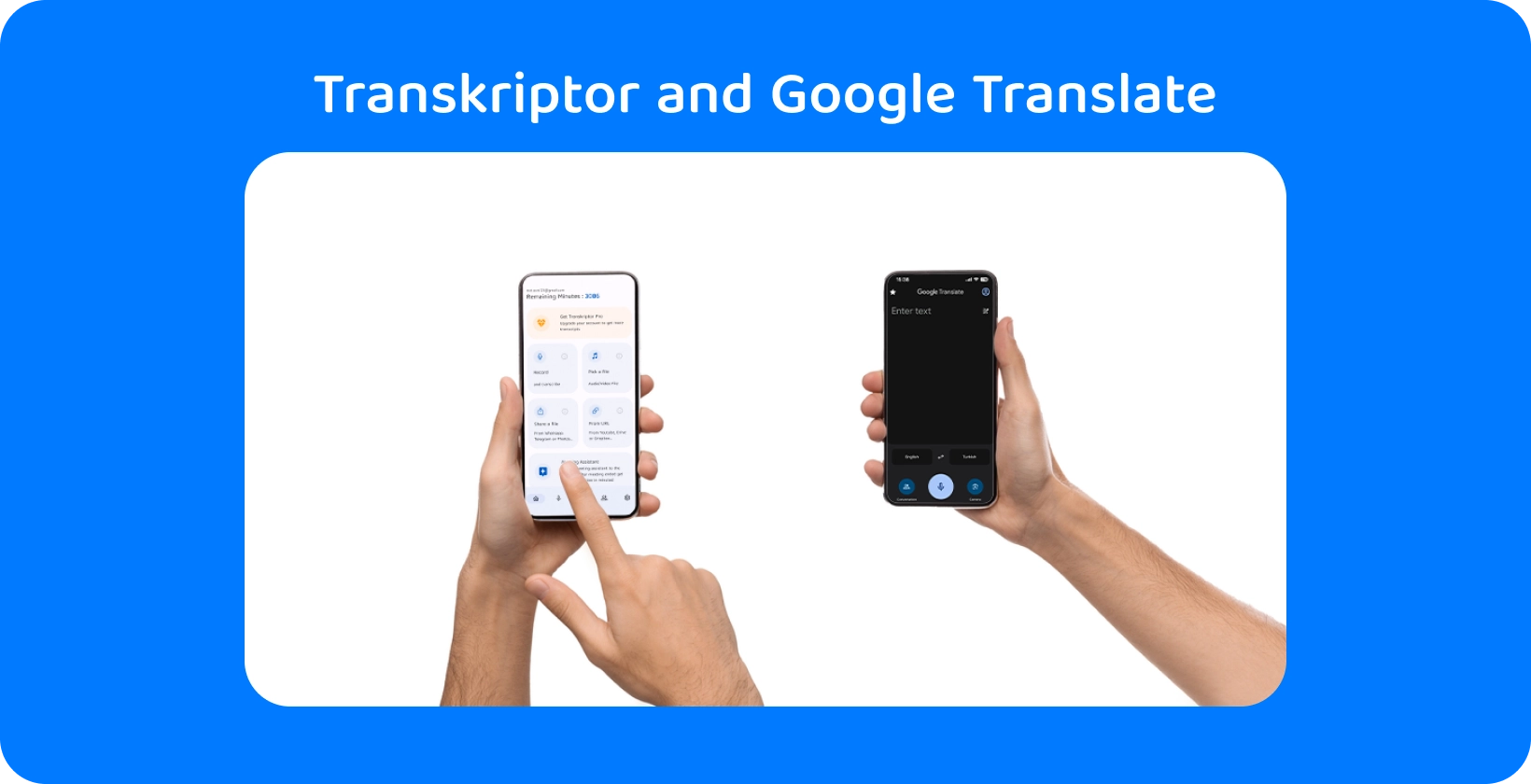
Why Use Transkriptor for Audio-to-Text Conversion over Google Translate?
Choosing the right audio-to-text transcription tool is key for accurate and efficient transcriptions. While Google Translate is useful for simple translations, it's not ideal for detailed audio transcriptions . Transkriptor, designed for audio to text, offers better accuracy, speed, and features than Google Translate. Here's why Transkriptor is the better choice for transcription tasks:
- Limitation: Unlike Google Translate, which limits transcription to 5,000 characters at a time, Transkriptor does not have such restrictions, allowing for the transcription of longer audio files without interruption.
- Accuracy: Transkriptor offers more accurate transcription services compared to Google Translate, especially designed for transcribing audio to text. This ensures that the essential details and nuances of the original audio are captured faithfully.
- Speed: Transkriptor provides fast and accurate transcription services, enabling users to convert large volumes of audio to text quickly and efficiently, saving valuable time for professionals and researchers.
- Translation Option: In addition to transcription, Transkriptor also offers translation options, allowing users to transcribe and then translate their text into multiple languages within the same platform, streamlining the workflow for multilingual projects.
- Ease of Editing: Transkriptor's platform is designed with user-friendly editing features, making it easier for users to review and make necessary corrections to their transcripts. Edits to the transcript are straightforward, enhancing the overall accuracy and quality of the final text.
Connect Transkriptor to the meetings for effortless interview transcription. Perfect for qualitative research accuracy.
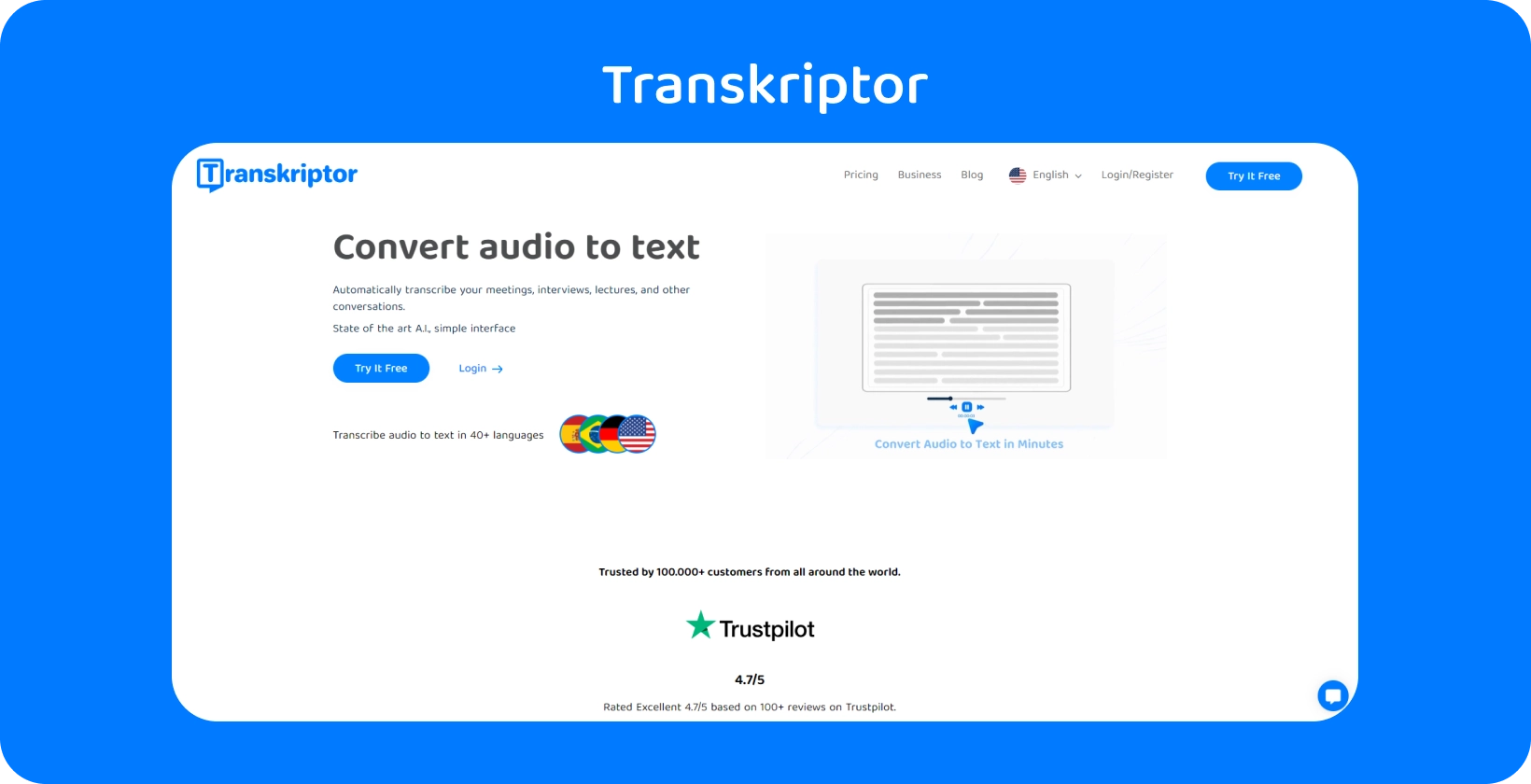
How to Use Google Translate with Transkriptor?
Transkriptor enhances the audio-to-text workflow by integrating Google Translate’s voice-to-text translation capabilities right into its platform. Once your audio or video is transcribed using Transkriptor’s accurate AI transcription tool, you can translate the generated transcript instantly with a single click—no copy-paste required.
This seamless transcription-to-translation pipeline helps users save time and preserve content accuracy. Whether you’re working with multilingual meetings, interviews, or lectures, integration ensures smooth transitions from speech-to-text to translation, powered by artificial intelligence. With built-in support for over 100 languages, Transkriptor offers a complete solution for fast, multilingual, AI-powered transcription and translation. Try it for free and see the difference!
